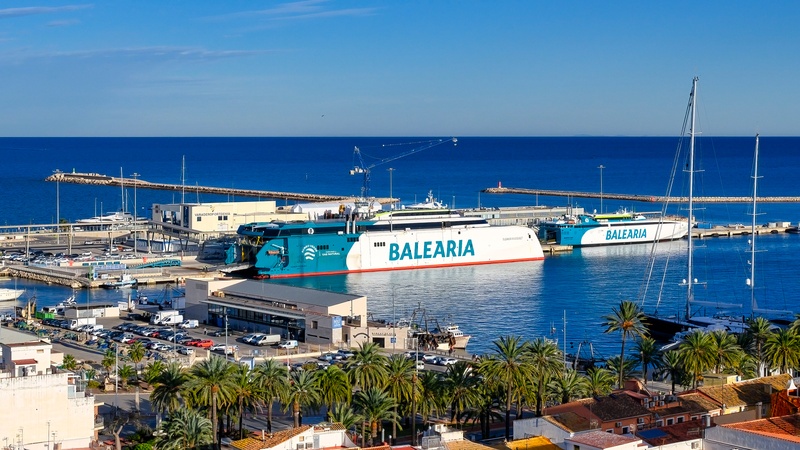Battery-powered electric ferry service to connect Spain and Morocco
The first-ever ‘green’ ferry service carrying passengers from mainland Spain to Morocco has been announced by Spanish operator Baleària.
The firm will launch two 100% electric, zero-emission fast ferries connecting the cities of Tarifa, Spain, and Tangier, Morocco.
Both vessels will be built at the Armon shipyard in north-west Spain and will take roughly two and a half years to build. The boats will be fuelled by battery power outputting around 16MW of energy to four electric propulsion units.
With a total capacity of 11,500kWh, the ships will be able to complete the 18-mile journey entirely on battery power. They will then be charged up for the return journey during a one-hour stopover. Charging will be carried out by two autonomous robotic arms in each port, which will be connected to the ship via an onshore power system.
“This is a pioneering and technologically advanced public-private project that will enable us, for the first time ever, to run the entire route using only electric energy and, therefore, zero emissions,” said Baleària’s president, Adolfo Utor.
“The Port Authority laid the foundations for this project, which is in line with our innovation and sustainability values. We are taking on the challenge of turning the Tarifa–Tangier Ville line into an example of mobility, modernity and international sustainability.”
The catamarans are 87 metres long, with capacity for 804 passengers and 225 cars. They will be capable of a maximum speed of 26 knots and are equipped with a T-foil system designed to dampen vertical movement for the comfort of passengers.
Marine transport is considered hard to decarbonise as electrifying ships is considerably more challenging than electrifying cars from both a technical and a market perspective. However, short trips like the Morocco-Spain crossing are ripe for electrification using current technologies.
Last year, Baleària launched the world’s second ‘fast ferry’, which used dual gas engines on the Barcelona–Mallorca–Menorca route. The new boats allowed the firm to increase its high-speed seats on the route by 50% and double the number while reaching a cruising speed of 35 knots.

